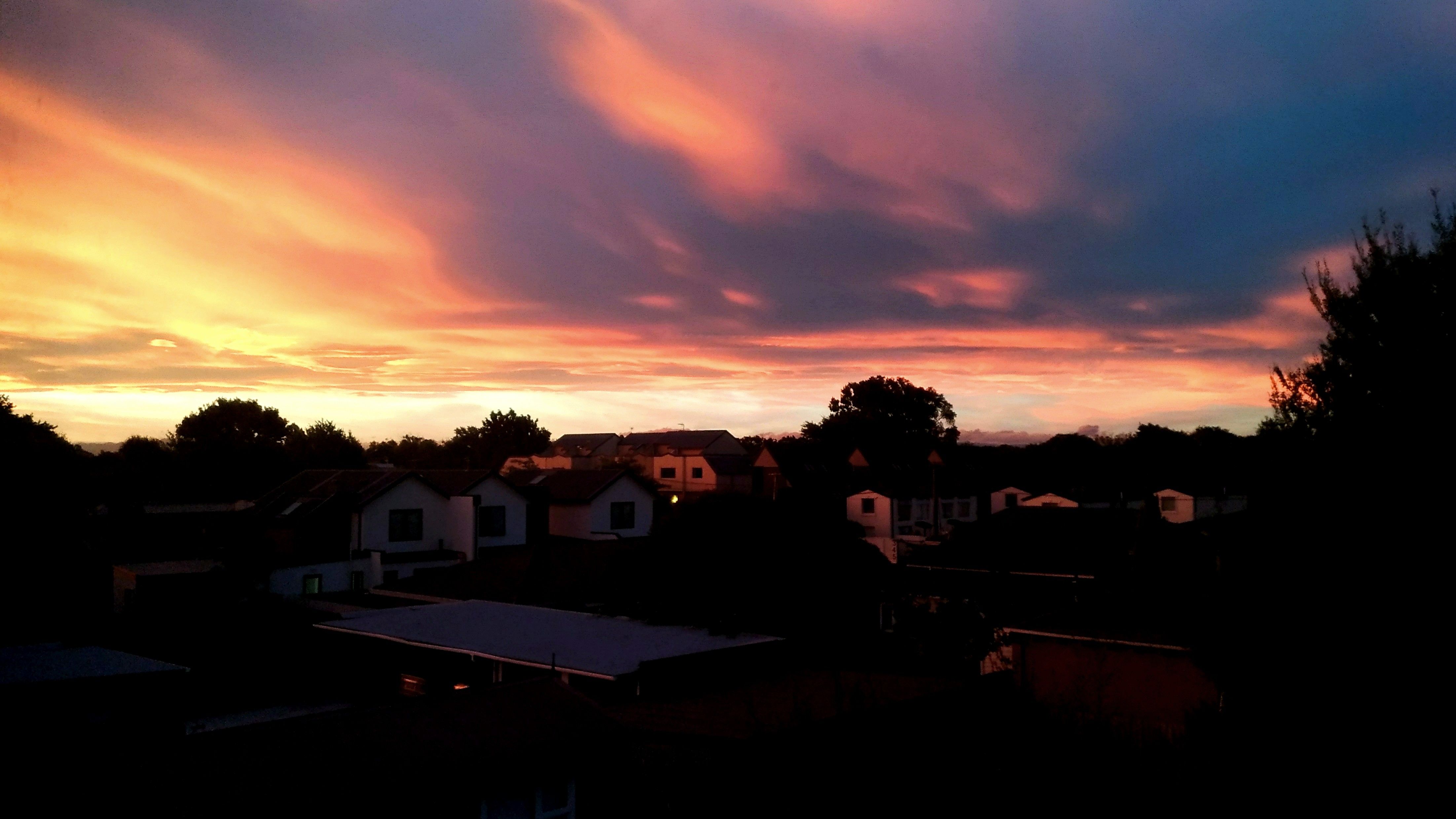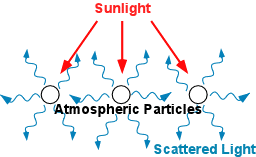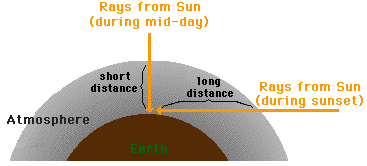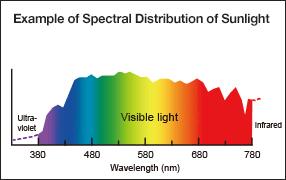Red: Science Picture Challenge #3 - Beautiful sunset

When sunset, the sky turns red. It is a photo taken yesturday outside my room. Why the sky is blue in daytime but red when sunrise and sunset?
It's all about the sun
The sun is the fundamental energy source of the Earth. The sun produces energy by a process called nuclear fusion. The engergy from the sun transfers to the Earth by radiation, aka sunlight.

(https://us.fotolia.com/tag/%22sun%20cartoon%22)
The sunlight spectrum
Solar radiation consists of light in different wavelengths, which includes ultraviolate radiation, visible radiation and infrared radiation. We can only see visible light in the spectrum.
Visible radiation of sunlight are in, in descending order of wavelength, red, orange, yellow, green, blue, indigo and violet colours. Sunlight appears white as the light of all colours are all together.
Scattering of the visible radiation by the atmosphere
Scattering means when light hits an object, the direction of the light changes to all directions.

(http://ww2010.atmos.uiuc.edu/(Gh)/guides/mtr/opt/mch/sct.rxml)
When sunlight hits the atmophere, the light is scattered by molecules in the atmophere. Our atmophere consists of mainly nitrogen and oxygen. They two are very small molecules, they scatters light with shorter wavelength more efficiently.
In daytime, nitrogen and oxygen molecules scatter the light with short wavelengths, the green, blue, indigo and violet light. These light are scattered more and "remained" in the sky, the sky appears blue.
When sunset (and sunrise), sunlight needs to travel longer distance in the atmosphere. The the light with short wavelengths is scattered (left behind) before reaching our eyes, so we cannot see then, the sky appears red, orange and yellow.

(http://www.physicsclassroom.com/class/light/Lesson-2/Blue-Skies-and-Red-Sunsets)
Reference:
http://eesc.columbia.edu/courses/ees/climate/lectures/radiation/
http://www.physicsclassroom.com/class/light/Lesson-2/Blue-Skies-and-Red-Sunsets
http://ww2010.atmos.uiuc.edu/(Gh)/guides/mtr/opt/mch/sct.rxml
https://news.nationalgeographic.com/news/2013/10/131027-sunset-sky-change-color-red-clouds-science/

But again, The more dust particles in the atmosphere, the more beautiful the sunset/sunrise.
Nice picture btw.
Also wanna participate, are there any set of guidelines? Would mean a lot.
Thank you!
Actually, dust is large, it scatters more wavelengths, the colour of sunwave would be less vivid.
Here is the link of the challenge, feel free to participate!
https://steemit.com/science/@mcw/red-science-picture-challenge-3-with-sbd-3-sbd
Would appear more reddish due to the scattering, hence more beautiful.
So, pollution helps in a way i guess ;) or not!
And thank you. :)
Oh, it seems depends on the sizes of pollutants!
Small aerosols made sunset even redder because of more scattering as you said! But large particles turns the colour of the sky muddy.
https://www.scientificamerican.com/article/fact-or-fiction-smog-creates-beautiful-sunsets/
https://news.nationalgeographic.com/news/2013/10/131027-sunset-sky-change-color-red-clouds-science/
Ah! The size :)
Thanks to you, i also did enter the challenge.
Since, now we're challengers fighting for the prize, good luck to you ;)
good explanation...the way you refer the picture, that's pretty easy to understand...
Thank you
Nice....warm post.
Thank you
Wow !!! Impressive!!! Nice scattering explanation ~
btw you move to New Zealand now?
Thank you!
I am working holidaying!
jealous me!!!!!